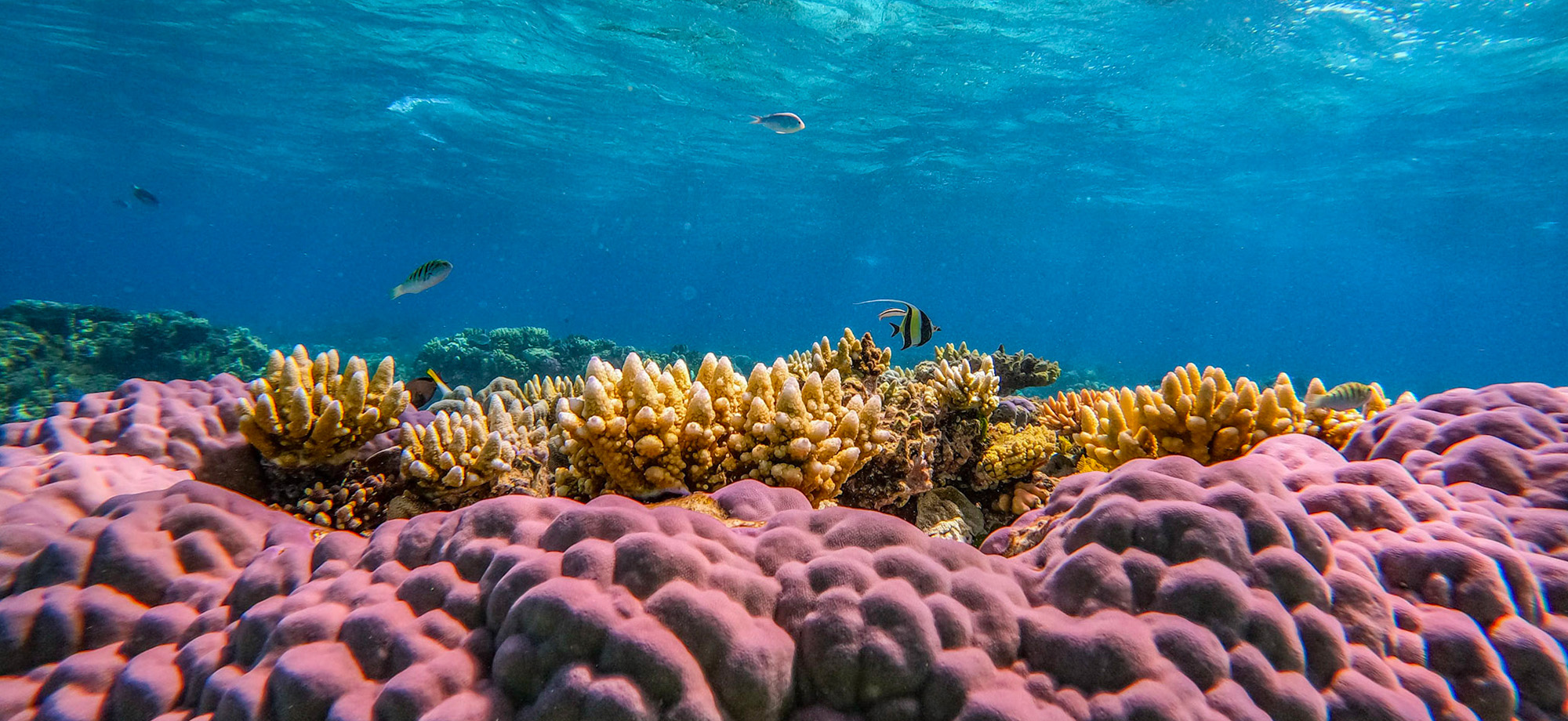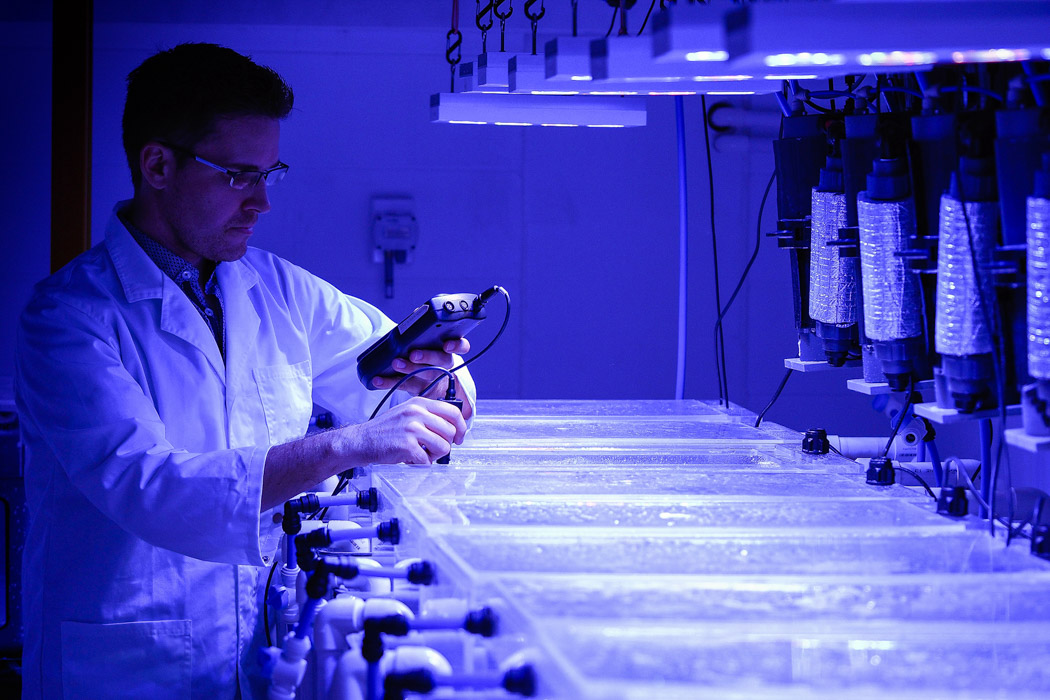Measuring the environmental data of coral recruits that are exposed to reduced light conditions in the National Sea Simulator
Corals are globally threatened due to increasing sea surface temperatures and ocean acidification. In addition, corals are periodically exposed to high sediment concentrations following storms, floods and dredging operations. Fine sediment particles can persist in the water column for several weeks and may travel up to 80 km during this time. Subsequently, the light availability is reduced, which is particularly harmful for recently settled coral recruits that are just beginning with the energy production through photosynthesis.
At the National Sea Simulator, young corals (coral recruits) will be reared in different climate scenarios which are predicted to become reality by the end of this century. Periodically, they will be exposed to multiple realistic light limitation intensities.
By comparing how the coral recruits from each climate treatment cope with the light limitation, we will determine climate-adjusted thresholds to support the improvement of the water quality management for the Great Barrier Reef and its catchments.


